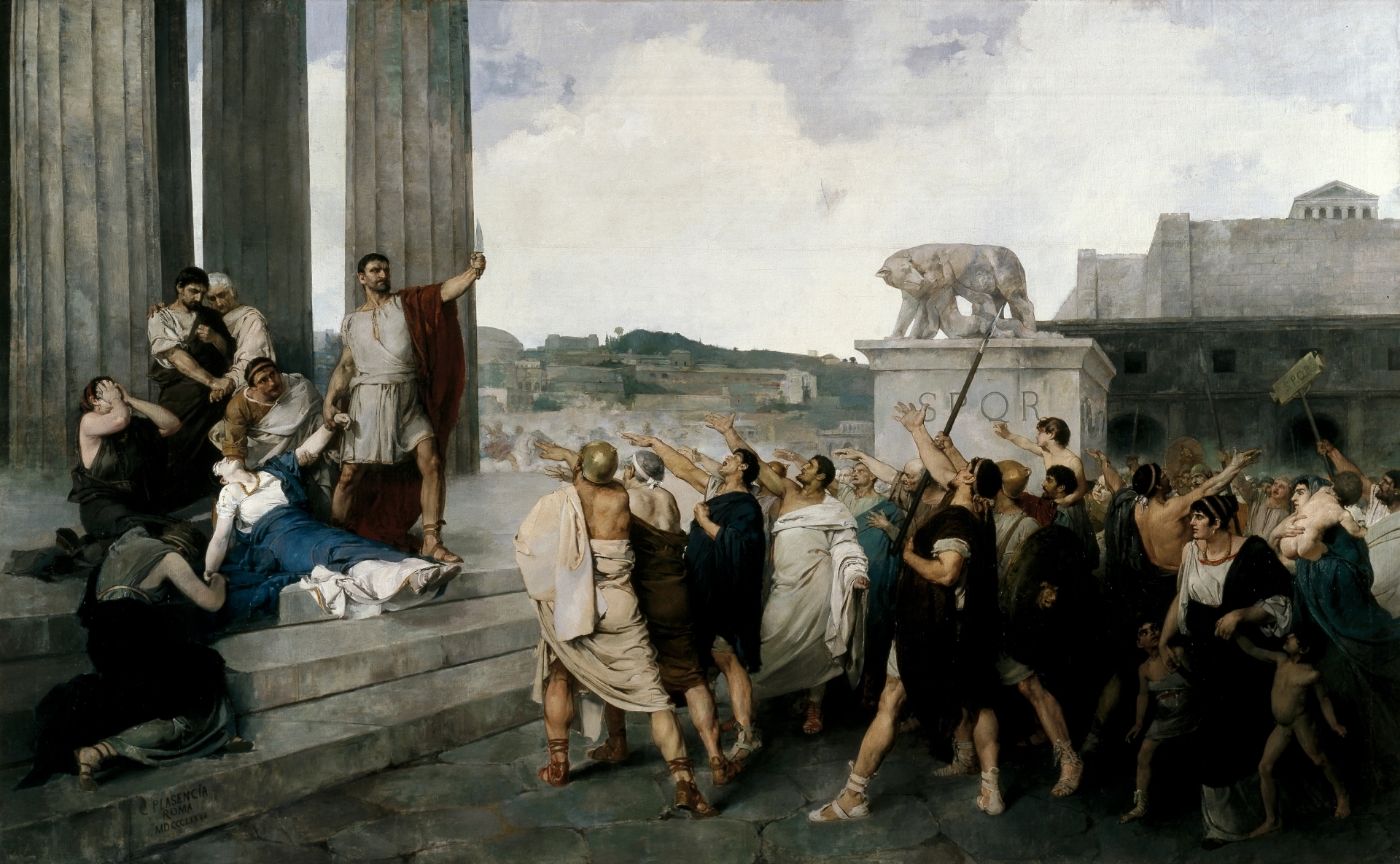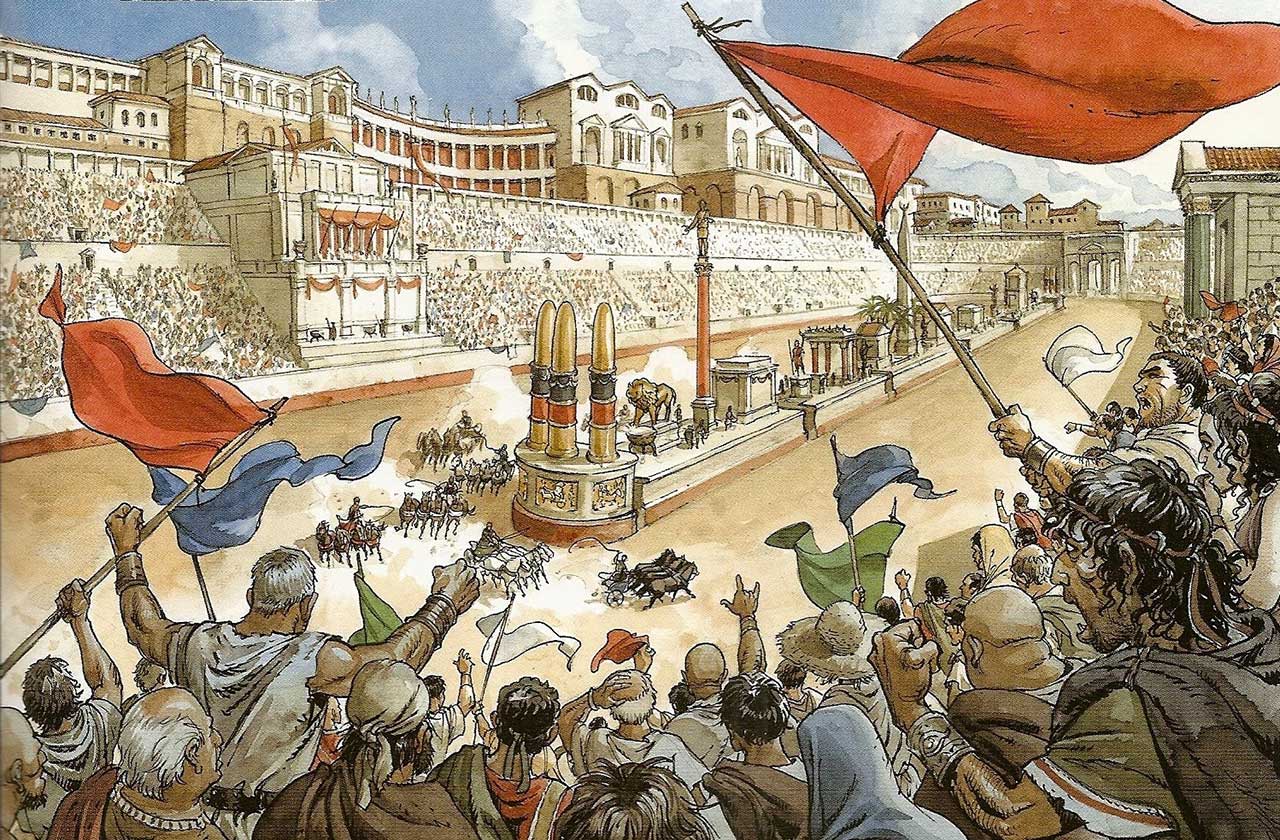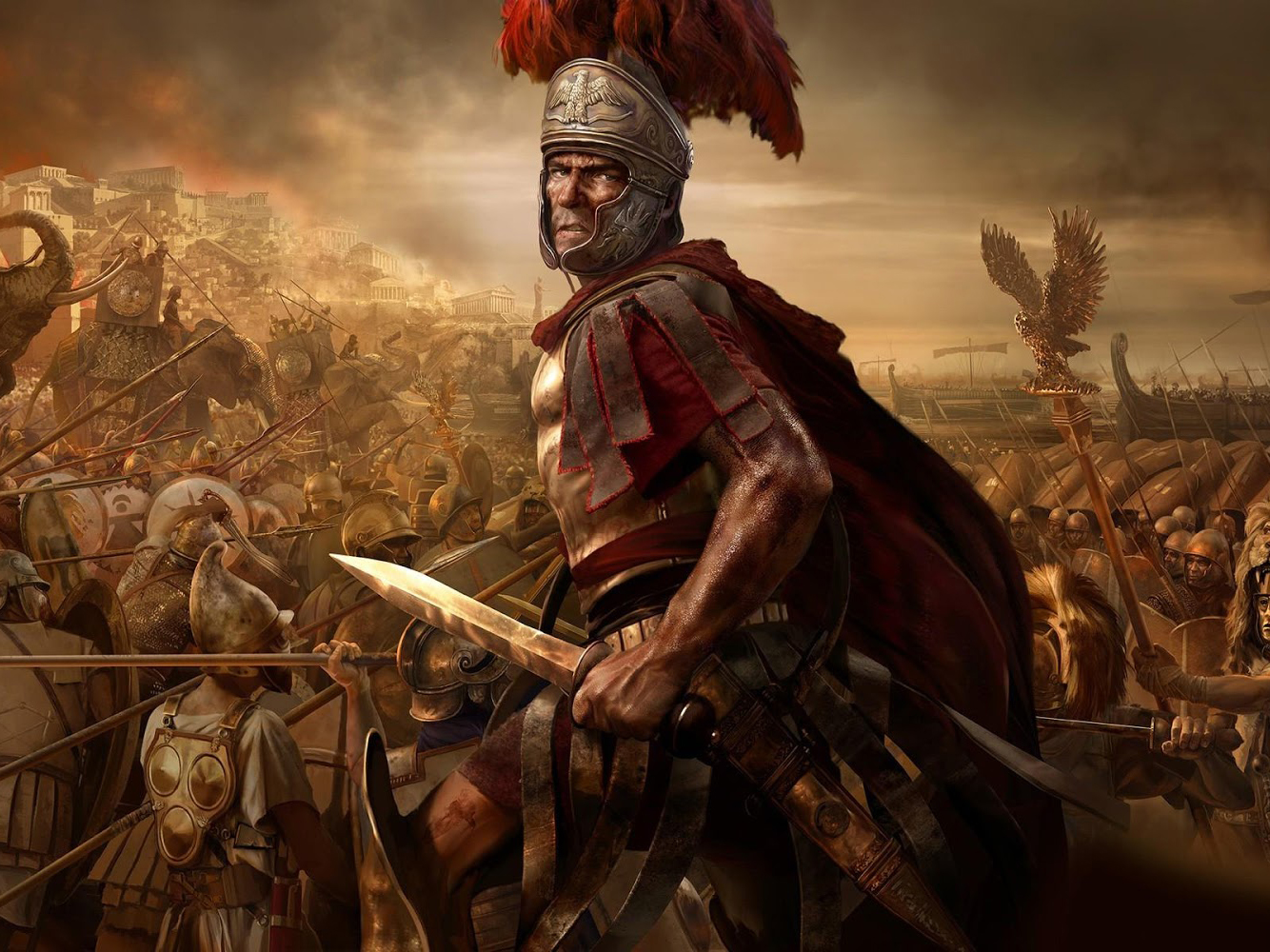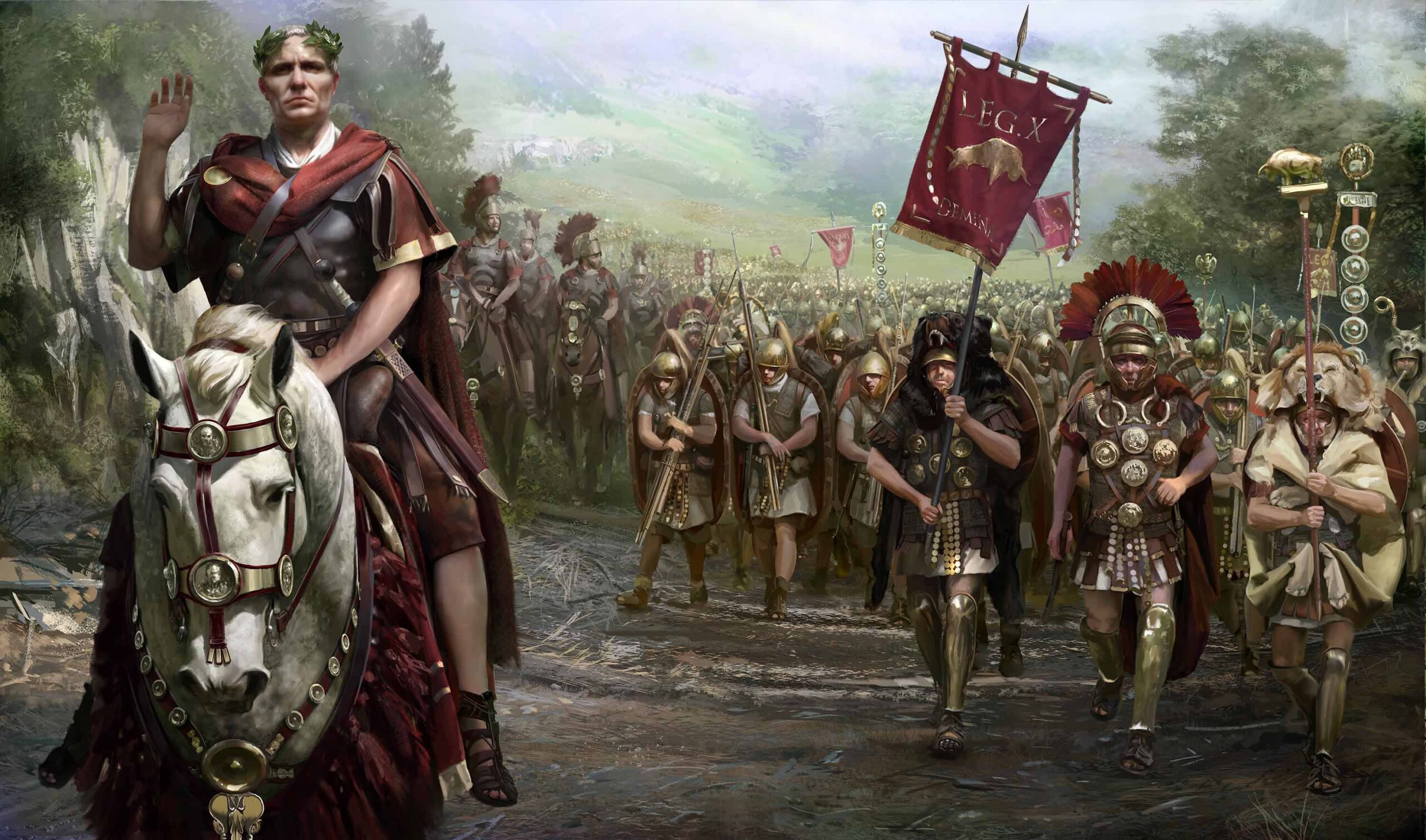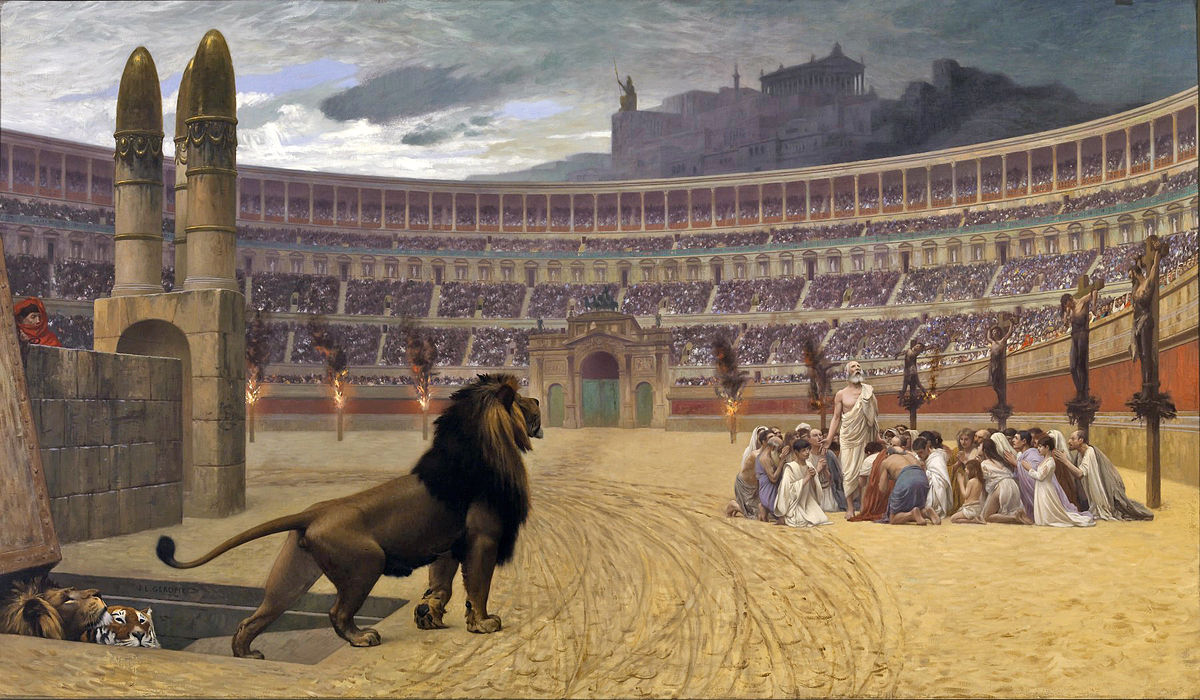It began in a small village of fishermen and farmers, which through the centuries and thanks to the perseverance and will of its inhabitants, developed until the Roman civilization it became one of the most important in the ancient world and its influence remains very much in force in today's world.
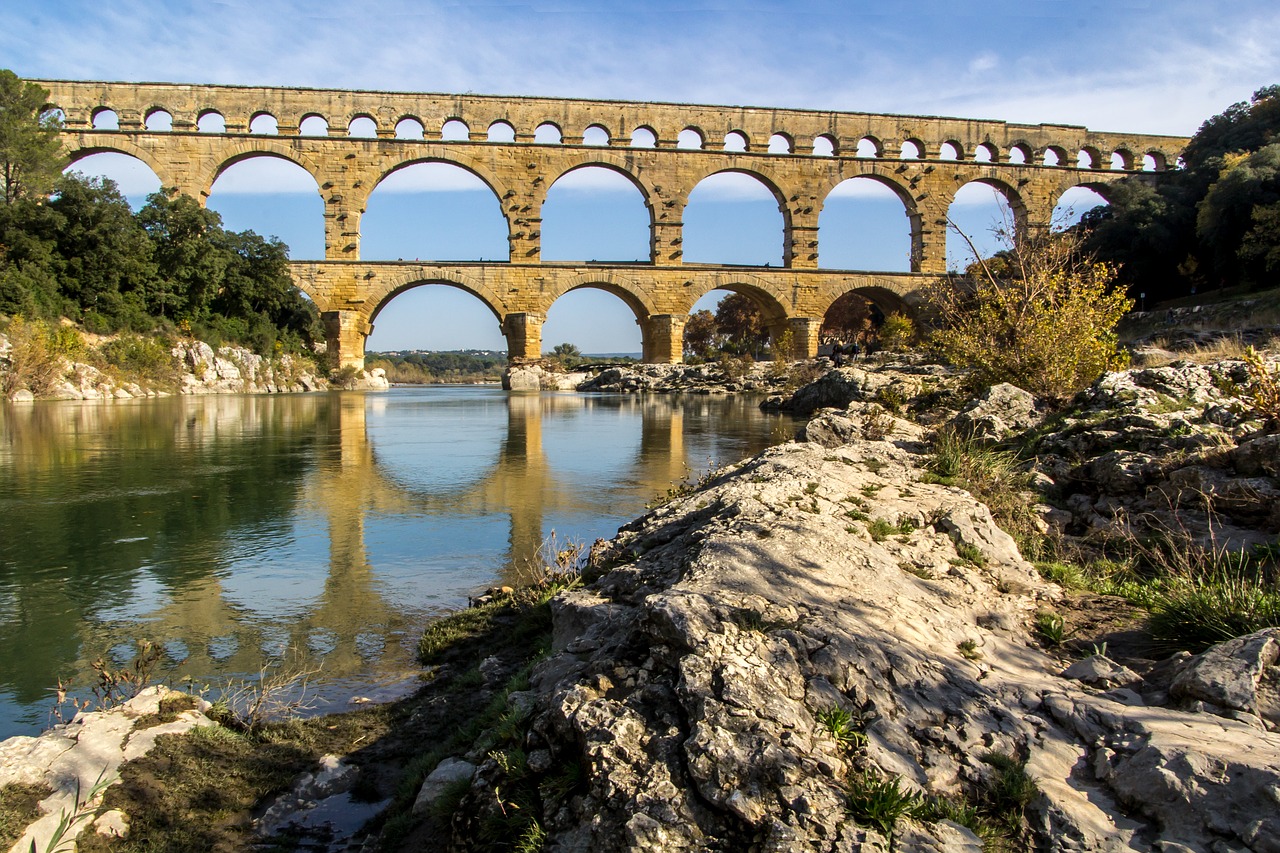
Roman civilization
Ancient Rome, one of the most important civilizations of the ancient world, began in what would become its main city, which in turn bears the name of Romulus, who according to legend was its founder. The center of Rome developed within the marshy plain, delimited by the Capitoline Hill, the Palatine and the Quirinal. The cultures of the Etruscans and the ancient Greeks had a definite influence on the formation of the ancient Roman civilization.
Ancient Rome reached the height of its power in the second century AD from the territory of modern England in the north to Sudan in the south and from Iraq in the east to Portugal in the west. Rome bequeathed to the modern world Roman law, some architectural forms and solutions (for example, an arch and a dome), and many other innovations (for example, the hydraulic mill). Christianity as a religion was born in the territory of the province occupied by the Roman Empire, which after six years became part of the Roman Empire.
The official language of the ancient Roman state was Latin. The religion during most of its existence was polytheistic, the emblem of the empire was the Golden Eagle (unofficially), after the adoption of Christianity, the labaros appeared (the banner that Emperor Constantine established for his troops) with chrismon ( monogram of Christ with the Greek letters Χ “ji” and Ρ “rho”).
history of roman civilization
The form of government changed over time from monarchy, republic, and finally empire. The history of the Roman Civilization can traditionally be roughly divided into Three phases, with their respective sub-phases, for which the following periods apply, not always historically accurate:
Monarchy (from the year 754/753 to the year 510/509 BC)
Republic (from the year 510/509 to the year 30/27 BC)
- Early Roman Republic (509-265 BC)
- Late Roman Republic (265 – 31/27 BC), two periods are sometimes distinguished [1]:
- The era of the great conquests of the republic (265-133 BC)
- Civil wars and crisis of the Roman Republic (133-31 / 27 BC)
Empire (31/27 BC – 476 AD)
- First Roman Empire. Principality (31/27 BC – 235 AD)
- Crisis of the 235rd century (284-XNUMX)
- late Roman Empire. Dominated (284-476).
Monarchical Period and Republic
During the monarchical period, Rome was a small state that occupied only part of the territory of Latium, the region of residence of the Latin tribe. During the early Republic, the Roman civilization expanded its territory significantly through numerous wars. After the Pyrrhic War, Rome began its rule over the Italian Peninsula, although the system of control over the subjugated territories had not yet been established at that time.
After the conquest of Italy, the Roman civilization became a prominent player in the Mediterranean, which soon brought it into conflict with Carthage, a large state founded by the Phoenicians in North Africa. In a series of three Punic Wars the Carthaginian state was completely defeated and the city itself was destroyed. At this time, Rome also began to expand to the east, subjugating Illyria, Greece, and later Asia Minor, Syria, and Judea.
Roman empire
In the XNUMXst century BC, Rome was shaken by a series of civil wars, as a result of which the final winner, Octavian Augustus, laid the foundations of the principality system and founded the Julio-Claudian dynasty, which, however, did not last for a long time. century.
The heyday of the Roman Empire fell in a relatively quiet time in the XNUMXnd century, but already the XNUMXrd century was filled with a struggle for power and, as a result, political instability, the foreign policy position of the empire was complicated. Diocletian's establishment of the dominant system managed to stabilize the order for a period by concentrating power in the emperor and his bureaucratic apparatus. In the fourth century under the attacks of the Huns, the division of the empire into two regions ended, and Christianity became the official religion of the entire empire.
In the 476th century, the Western Roman Empire became the subject of active resettlement of Germanic tribes, which ultimately undermined the unity of the state. The overthrow of the Western Roman Emperor Romulus Augustulus by the German leader Odoacer on September XNUMX, XNUMX is considered the traditional date for the fall of the Roman Empire.
Various researchers argue that the Roman civilization was created by its own citizens in an original way, that it arose on a special system of values that developed in the Roman civil community in connection with the peculiarities of its historical development. These characteristics include the establishment of a republican form of government as a result of the struggle between patricians and plebeians, as well as Rome's almost continuous wars, which turned it from a small Italian city into the capital of a great power.
Under the influence of these factors, the ideology and value system of Roman citizens was formed. It was determined, first of all, by patriotism, the idea of the special election of the Roman people and the very fate of the victories destined for them, about Roman civilization as the highest value, about the duty of a citizen to serve it with all his forces.
To do this, a citizen had to possess courage, perseverance, honesty, loyalty, dignity, moderate lifestyle, the ability to obey discipline in war, passed law and custom established by ancestors in times of peace, honor to the patron gods of their families, rural communities and the Roman civilization itself. A unique feature of ancient Roman civilization was Roman law, the concept of equality and the ability to summon to court any representative of the nobility or official with the exception of the emperor.
state structure
Legislative powers in the classical period of ancient Roman history were divided between magistrates, senate, and Roman assemblies (comitia).
The magistrates could present a bill (rogatio) to the Senate, where it was discussed. Initially, the Senate had a hundred members, for most of the history of the Republic there were about three hundred members, Sulla doubled the number of members, then their number varied. A place in the Senate was obtained after the approval of the ordinary magistrates, but the censors had the right to purge the Senate with the possibility of expelling individual senators.
The committees had the right to vote only for or against and could not discuss or make their own adjustments to the proposed bill. The bill approved by the elections received force of law. According to the laws of the dictator Quintus Publilius Philo in the year 339 BC, approved by the popular assembly, the law becomes binding for all the people.
The highest executive power of the Roman civilization during the empire was delegated to the highest magistrates. At the same time, the question of the content of the very concept of empire remains controversial. The ordinary magistrates were chosen in the Roman assemblies.
Dictators who were elected on special occasions and for no more than six months had extraordinary powers and, unlike ordinary magistrates, were not accountable. With the exception of the extraordinary magistracy of the dictator, all positions in Rome were collegiate.
The social structure in Roman civilization
At the initial stage of development, Roman society consisted of two main estates: the patricians and the plebeians. According to the most common version of the origin of these two main classes, the patricians are the indigenous inhabitants of Rome, and the plebeians are a foreign population, which, however, had civil rights.
The patricians were united first in one hundred and then in three hundred gens (clan or group of families). Initially, commoners were prohibited from marrying patricians, which ensured the isolation of the patrician class. In addition to these two classes, there were also patrician clients in Rome (slaves who had received their freedom and who after their liberation remained in the service of their former owner) and slaves.
Over time, the social structure as a whole becomes noticeably more complex. Equites appeared, people not always of noble birth, but engaged in commercial operations (the patricians considered commerce an undignified occupation) who concentrated significant wealth in their hands. Around the XNUMXrd century BC the patricians merged with the equites into the nobility.
However, the nobility was not united. According to Roman ideas, the nobility of the family to which a person belongs determines the degree of respect that is held for him. Each had to correspond to his origin, and worthy occupations (for example, trade) by a person of noble birth, as well as common people who had reached a high position, were equally censured.
Citizens also began to be divided into citizens by birth and citizens who have received rights under a certain law. People of various nationalities (mainly Greeks) who had no political rights, but played an important role in the life of society, also began to flock to Rome. Freedmen appeared, that is, slaves who were granted freedom.
marriage and family
In the early period of Roman civilization, it was considered that the goal and main essence of a citizen's life was to have his own house and children, while family relationships were not subject to law, but were regulated by law. tradition. The head of the family was called the “Pater Familias” and he controlled the children, the wife, and other relatives (in upper-class families, the family also included slaves and servants).
The power of the father was that he could give his daughter in marriage or divorce at will, sell his children as slaves, he could also recognize or not recognize his son. Parental authority was also extended to adult children and their families: only with the death of their father did the children become full citizens and heads of families.
The woman was subordinate to the man because, according to Teodoro Mommsen, she "belonged only to the family and did not exist for the community." In wealthy families, a woman was given an honorable position, she was engaged in managing the economy. Unlike Greek women, Roman women could appear freely in society and, despite the fact that the father had the highest power in the family, they were protected from his arbitrariness. The basic principle of the construction of Roman society is to rely on the elementary cell of society: the family.
Until the end of the Republic, there was a type of marriage cum manu, "by hand", that is, a daughter, when she married, passed into the power of the head of the husband's family. Later, this form of marriage ceased to be used and sine manu marriages began to be arranged, "without hands", in which the wife was not under the control of her husband and remained under the control of her father or guardian. .
In Roman civilization, the law provided for two forms of marriage: In the first form, the woman passed from the authority of her father to the authority of her husband, that is, she was accepted into her husband's family.
In the other form of marriage, the woman remained a member of the old surname, while claiming the family inheritance. This case was not the most common and was more like concubinage than marriage, since the wife could leave her husband and return home at almost any time.
Education
Boys and girls began to be taught at the age of seven. Rich parents preferred homeschooling. The poor used the services of the schools. At the same time, the prototype of modern education was born: children went through three stages of education: primary, secondary and higher. The heads of families, who were concerned with the education of their children, tried to hire Greek teachers for their children or to get a Greek slave to teach them. Parents' vanity forced them to send their children to Greece for higher education.
In the early stages of education, children were mainly taught writing and counting, they were provided with information about history, law and literature. In high school he trained to speak in public. During the practical lessons, the students carried out exercises that consisted of presenting speeches on a specific topic of history, mythology, literature or public life. Outside of Italy, they received education mainly in Athens, on the island of Rhodes, where they also improved their oratory.
The Romans were also concerned that women be educated in relation to their role in the family: organizers of family life and educators of children at an early age. There were schools where girls studied with boys. And it was considered honorable if they said about a young lady that she was an educated girl.
In the Roman civilization, as early as the XNUMXst century AD, they began to train slaves, as slaves and freedmen began to play an increasingly conspicuous role in the economy of the state. The slaves became administrators of estates and engaged in trade, supervisory positions over other slaves. Literate slaves were attracted to the bureaucratic apparatus of the state, many slaves were teachers and even architects.
A literate slave was worth more than an illiterate one because it could be used for specialized jobs. Educated slaves were called the main value of the wealthy Roman. The former slaves, the freedmen, gradually began to form a significant stratum in Rome. They strove to take the place of an employee, a manager in the state apparatus, engage in commercial activities, in usury.
Their advantage over the Romans began to become apparent, which was that they did not shy away from work, considered themselves disadvantaged, and showed perseverance in fighting for their place in society. Ultimately they were able to achieve legal equality.
Army
The Roman army was one of the main elements of the Roman society and state. The Roman army for almost the entire time of its existence was, as practice has shown, the most advanced among the rest of the states of the Ancient World, having passed from the popular militia to professional regular infantry and cavalry with many auxiliary units and allied formations.
At the same time, the main fighting force has always been the infantry. In the era of the Punic Wars, in fact, the Marine Corps appeared and behaved perfectly. The main advantages of the Roman army were mobility, flexibility and tactical training, which allowed it to operate in various terrain conditions and in adverse weather conditions.
Octavian Augustus had reduced the army to twenty-eight legions by 14 AD. C. During the heyday of Ancient Rome, the total number of the army was usually up to 100 thousand people, but it could increase to 250 or 300 thousand people and more.
After the reforms of Diocletian and Constantine, the number of the Roman army reached 600-650 thousand people, of which 200 thousand were the mobile army and the rest were garrisons. According to some accounts, in the age of Honorius, the payroll of the troops of both parts of the Roman Empire was from nine hundred thousand to a million soldiers (although in reality the army was smaller).
The ethnic composition of the Roman army changed over time: in the XNUMXst century it was mainly the army of the Romans, at the end of the XNUMXst and beginning of the XNUMXnd century it was the army of Italics, but already at the end of the XNUMXnd and beginning of the XNUMXrd century it was converted in an army of Romanized barbarians, remaining Roman in name only.
The Roman army had the best weapons for its time, an experienced and well-trained staff, distinguished by the harsh discipline and high military expertise of the commanders who used the most advanced methods of warfare, achieving a complete defeat of the enemy.
The main branch of the army was the infantry. The navy supported the actions of ground forces in coastal areas and the transportation of armies to enemy territory by sea. Military engineering, the organization of camps, the ability to make rapid transitions over long distances, the art of siege and fortress defense received significant development.
Ancient roman civilization culture
Politics, war, agriculture, the development of law (civil and sacred) and historiography were recognized as deeds worthy of a Roman, especially the nobility. On this basis, the early culture of Rome took shape.
Foreign influences, mainly Greek, which penetrated through the Greek cities of southern modern Italy, and then directly from Greece and Asia Minor, were permitted only to the extent that they did not contradict the Roman value system or proceed in accordance with the Roman value system. with the. In turn, Roman culture at its height had a great impact on neighboring peoples and on the subsequent development of Europe.
The early Roman worldview was characterized by the feeling of being a free citizen with a sense of belonging to a civil community and the priority of state interests over personal ones, combined with conservatism, which consisted of following the customs of the ancestors. In the second and first centuries before Christ there was a departure from these attitudes and individualism intensified, the personality began to oppose the state, even some traditional ideals were rethought.
As a result, in the age of the emperors, a new formula for governing Roman society was born: there should be a lot of “bread and circuses” and a certain decline in morale among the multitude of citizens, which has always been perceived by despotic rulers. with a certain degree of favour.
Language
Latin language, whose appearance is attributed to the middle of the third millennium before Christ, was part of the Italic group of the Indo-European language family. In the process of historical development of ancient Italy, Latin supplanted other Italic languages and, over time, occupied a dominant position in the western Mediterranean. There are several stages in the development of Latin: Archaic Latin, Classical Latin, Postclassical Latin, and Late Latin.
At the beginning of the first millennium BC, Latin was spoken by the population of the small region of Latium, located in the western middle part of the Apennine peninsula, along the lower course of the Tiber. The tribe that inhabited Latium was called the Latins, and their language was Latin. The center of this region was the city of Rome, after which the Italic tribes united around it began to call themselves the Romans.
Religion
Ancient Roman mythology in many respects is close to the Greek, right down to the direct borrowing of individual myths. However, in the religious practice of the Romans, animist superstitions associated with the cult of spirits also played an important role: jinn, penates, lares and lemurs. Also in ancient Rome, there were numerous colleges of priests.
Although religion played an important role in traditional ancient Roman society, by the XNUMXnd century BC a significant part of the Roman elite was already indifferent to religion. In the first century BC Roman philosophers (most notably Titus Lucretius Carus and Cicero) greatly revised or questioned many of the traditional religious positions. At the turn of the first century Octavian Augustus took steps to establish an official cult of the empire.
At the end of the 313st century in the Jewish diasporas of the cities of the Roman Empire, Christianity arose, and then representatives of other peoples of the empire joined it. At first it only aroused suspicion and hostility on the part of the imperial authorities, in the middle of the third century it was banned and began harassment of Christians throughout the Roman Empire. However, as early as XNUMX, Emperor Constantine issued an Edict of Milan, allowing Christians to freely profess their religion, build temples, and hold public office.
Christianity gradually became the state religion. In the second half of the XNUMXth century the destruction of pagan temples began, the Olympic Games were banned.
Science
Roman science inherited a number of Greek studies, but unlike them (especially in the field of mathematics and mechanics), it was mainly applied in nature. For this reason, it was the Roman numerals and the Julian calendar that received worldwide distribution. At the same time, its characteristic feature was the presentation of scientific topics in a literary and playful way.
Jurisprudence and agricultural sciences reached a special flourishing, a large number of works were devoted to architecture and urban planning and military technology. The greatest representatives of the natural sciences were the encyclopedic scientists Pliny the Elder, Marco Terencio Varrón and Seneca. Ancient Roman philosophy developed mainly out of Greek, with which it was largely associated. Stoicism was the most widespread in philosophy.
Roman science achieved remarkable success in the field of medicine. Among the outstanding doctors of Ancient Rome, we can highlight: Dioscorides, a pharmacologist and one of the founders of botany, Soranus of Ephesus, an obstetrician and pediatrician, Galen of Pergamon, a talented anatomist who discovered the functions of the nerves and the brain .The encyclopedic treatises written during Roman times remained the most important source of scientific knowledge for most of the Middle Ages.
The legacy of Roman civilization
Roman culture, with its developed ideas about the convenience of things and actions, about the duty of a person to himself and the state, about the importance of law and justice in the life of society, implemented the culture ancient Greek with its desire to understand the world, a developed sense of proportion, beauty, harmony, a pronounced element of play. The ancient culture, as a combination of these two cultures, became the basis of European civilization.
The cultural heritage of Ancient Rome can be perceived in the terminology used in science, architecture and literature. For many centuries, Latin was the language of communication used internationally by all educated people in Europe. It is still used in scientific terminology. On the basis of the Latin language in the ancient Roman possessions, the Romance languages arose, spoken by the peoples of much of Europe.
Among the most outstanding achievements of Roman civilization is Roman law, which played a very important role in the subsequent development of legal thought. It was in the Roman domains that Christianity arose and later became the state religion, a religion that united all European peoples and greatly influenced the history of mankind.
Here are some links of interest:
